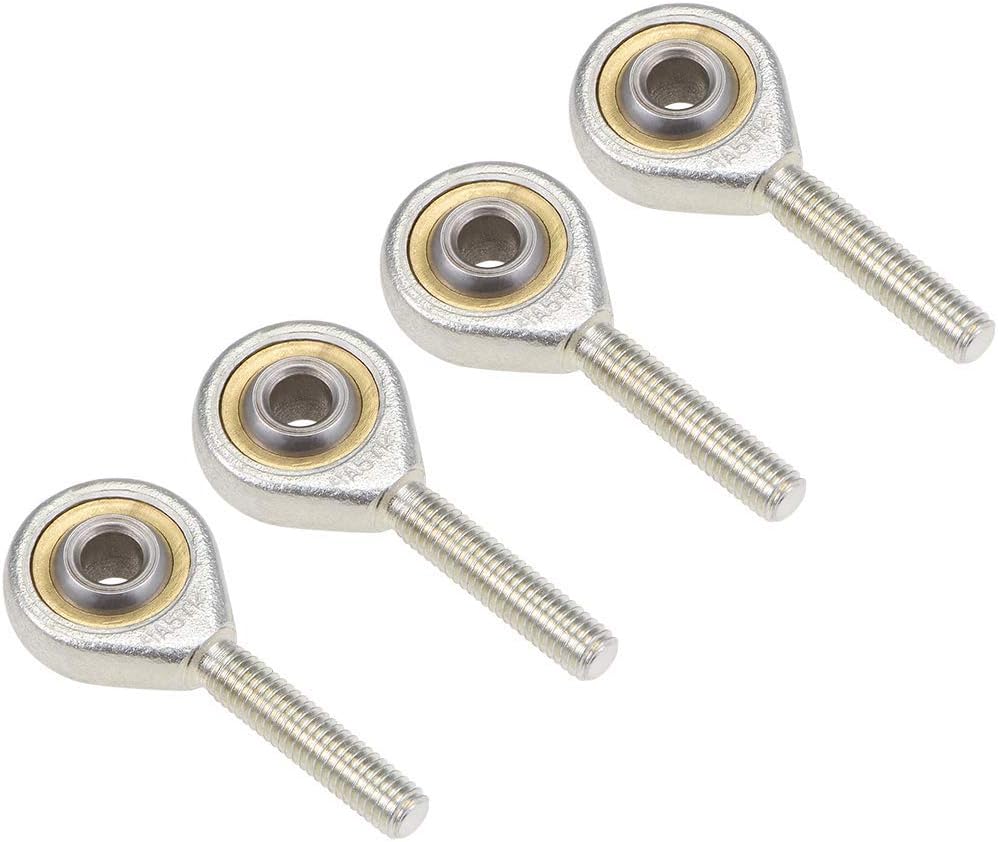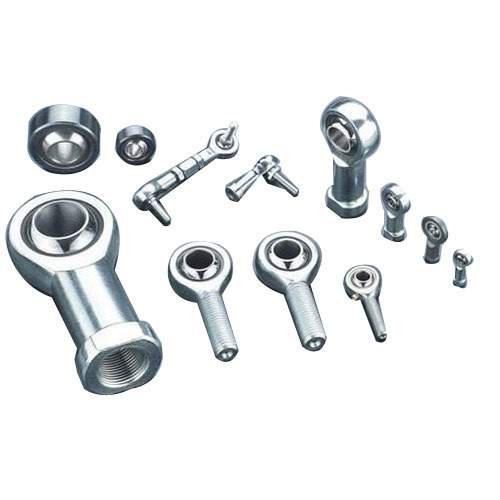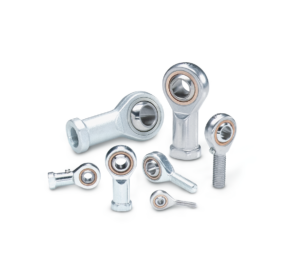
Role of Seals and Boots in Protecting Rod End Bearings
Seals and boots serve a crucial role in safeguarding rod end bearings from contaminants and moisture in various applications. Here’s an overview of their functions:
Contaminant Protection:
Rod end bearings are often exposed to harsh environments, including dust, dirt, debris, and other contaminants. Seals and boots create a protective barrier around the bearing’s moving parts, preventing these contaminants from entering the bearing’s internal components.
By effectively sealing off the bearing, they help maintain the integrity of the lubricant and prevent abrasive particles from causing premature wear or damage to the bearing surfaces. This is especially important in applications where cleanliness and reliability are critical, such as aerospace, automotive, industrial machinery, and more.
Moisture Resistance:
In applications where exposure to moisture is a concern, seals and boots act as a defense against water, humidity, and other liquid contaminants. This is vital for preventing corrosion and maintaining the performance of the rod end bearing over time.
Seals and boots are often made from materials that are resistant to moisture, enhancing their protective capabilities. They create a barrier that keeps water away from sensitive bearing components, such as rolling elements and raceways.
Increased Lifespan:
By preventing contaminants and moisture from infiltrating the bearing, seals and boots extend the lifespan of the rod end bearing. They contribute to the overall durability and reliability of the bearing in various applications, ultimately reducing maintenance requirements and replacement intervals.
It’s important to select the right type of seal or boot for a specific application, taking into account factors such as the level of contamination, exposure to moisture, operating conditions, and temperature range. Proper maintenance and periodic inspection of seals and boots are also essential to ensure continued protection and optimal bearing performance.

Maintenance Practices to Extend the Life of Rod End Bearings
Rod end bearings play a crucial role in various mechanical systems, and proper maintenance can significantly extend their lifespan. Here are some specific maintenance practices to consider:
1. Lubrication: Regularly lubricate the rod end bearing according to the manufacturer’s recommendations. Proper lubrication reduces friction, minimizes wear, and prevents corrosion. Use high-quality lubricants suitable for the application’s conditions.
2. Inspection: Perform routine inspections to check for signs of wear, damage, or contamination. Look for play, unusual noises, visible damage, and any other indicators mentioned earlier. Timely detection of issues allows for prompt corrective action.
3. Cleanliness: Keep the surrounding environment clean to prevent contamination. Dust, dirt, and debris can lead to premature wear and damage. Regularly clean the bearing housing and sealing mechanisms.
4. Environmental Protection: In applications exposed to harsh environments, consider protective measures such as seals and shields to prevent contamination and reduce exposure to moisture, dust, or chemicals.
5. Alignment: Ensure proper alignment of rod end bearings within the system. Misalignment can increase stress on the bearing and lead to premature failure. Correct any alignment issues promptly.
6. Avoid Overloading: Be mindful of load capacities and avoid subjecting rod end bearings to excessive loads. Overloading can lead to rapid wear and shortened bearing life. Use bearings with appropriate load ratings for the application.
7. Regular Maintenance Schedule: Establish a maintenance schedule that includes lubrication, inspections, and cleaning. The frequency of maintenance depends on factors like operating conditions, load, and the manufacturer’s recommendations.
8. Replacement of Seals: If your rod end bearings have seals or shields, periodically check their condition. Replace damaged or worn-out seals to maintain effective contamination protection.
9. Storage: When storing spare rod end bearings, ensure they are kept in a clean, dry, and temperature-controlled environment. Use appropriate storage methods to prevent corrosion or damage before installation.
10. Expert Advice: If you’re unsure about maintenance or replacement procedures, consult with the bearing manufacturer or a qualified technician for guidance and assistance.
By following these maintenance practices, you can extend the life of rod end bearings, reduce downtime, and ensure the reliable performance of the systems in which they are used.

Scenarios Requiring Articulation and Pivoting with Rod End Bearings
Rod end bearings are essential components in scenarios where articulation and pivoting are crucial. Here are some examples:
- Vehicle Suspension: Rod end bearings in a vehicle’s suspension system allow articulation of the wheels, ensuring a smooth and controlled ride, especially on uneven terrain.
- Aircraft Control Surfaces: In aviation, rod end bearings enable the pivoting of control surfaces like ailerons, elevators, and rudders, providing precise control over an aircraft’s movements.
- Robotic Arms: Rod end bearings facilitate the articulation and pivoting of robotic arms in manufacturing, assembly, and medical robotics, allowing for precise and flexible movement.
- Construction Equipment: Heavy machinery such as excavators and cranes rely on rod end bearings for articulation in booms, buckets, and other moving parts for effective operation.
- Marine Steering Systems: Rod end bearings play a vital role in boat steering systems, allowing articulation of the outboard motor or inboard-outboard drive unit.
- Agricultural Machinery: Tractors and combines use rod end bearings to articulate and pivot components in the steering and hydraulic systems for farming operations.
- Rail and Transportation: In rail systems, rod end bearings help with the articulation of train doors, ensuring safe and efficient passenger entry and exit.
- Conveyor Systems: In material handling, rod end bearings assist in the pivoting and articulation of conveyor belt rollers and other components for the smooth movement of goods.
- Sports Equipment: Fitness machines like elliptical trainers use rod end bearings to facilitate articulation in pedal arms, allowing users to exercise effectively.
These examples demonstrate the versatility and importance of rod end bearings in various industries where articulation and pivoting are essential for optimal performance and control.


editor by CX 2024-04-13